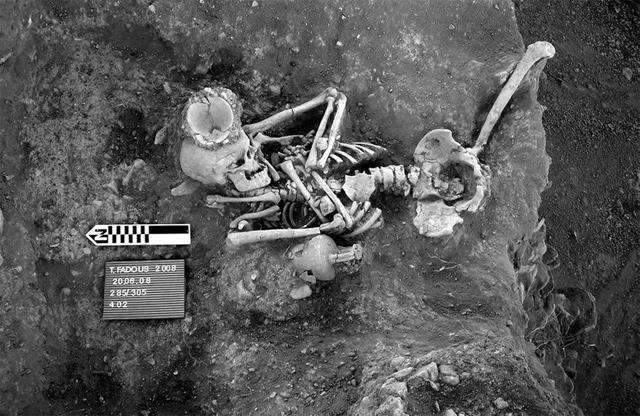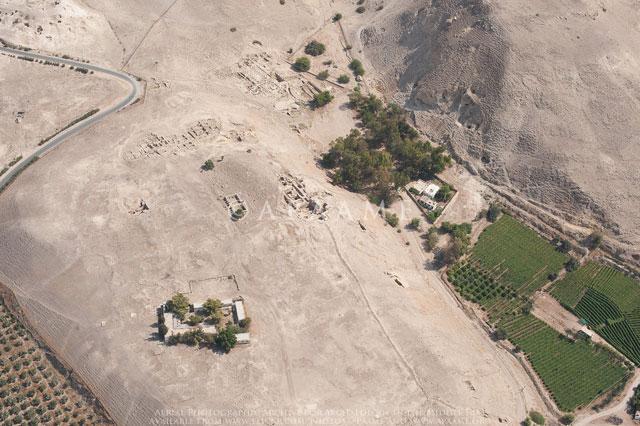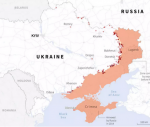You are here
Webinar held on urbanism in Early Bronze Age
By Saeb Rawashdeh - Feb 24,2021 - Last updated at Feb 24,2021

A Bronze Age burial site with skeletal remains at Tell-Fadous Kfarabida in Lebanon (Photo courtesy of Kamal Badreshany)
AMMAN — Urbanism is a different package of pathways and conditions, noted a Lebanese archaeologist at a recently organised webinar by the Council of British Research in the Levant.
“The first dense agglomerations in the Levant emerged in 3,050 BC and the questions how these agglomerations occurred preoccupy archaeologist for a long time, “ said Kamal Badreshany, who received his PhD from the University of Chicago, at the lecture titled “Understanding the development of complex societies in Lebanon during the Early Bronze Age”.
According to Badreshany, scholars can analyse material evidence when they lack enough information about the civic life in the Bronze Age cities. However, in the light of the new evidence provided by researchers, identity, religious customs and political hierarchies can be reexamined.
“The key thing is the shared infrastructure in the cities: Walls, market places and public buildings that imply the unity,” Badreshany stressed, adding that settlements were dense and planned, though “there’s a limited evidence of the market economy” since the international trade was underdeveloped.
On the other hand, there is evidence of ritual and communal activities and remains of temples, but the number of cultic objects is small, he outlined.
Moreover, the long-term processes of social and technical innovation led to the population growth and its necessity of administrative organisation, Badreshany said, noting that Lebanon is different from the rest of the Levant because it was more mountainous, forested and supplied with water.
“However, sites in Lebanon are relatively smaller with 300-400 people living there compared with other parts of the region,” Badreshany highlighted.
Furthermore, between 2,900BC and 2,700BC a major transition took place and the evidence shows a significant increase in the population of coastal sites in Lebanon, the archaeologist said.
He also noted the change in the pottery technology. “Ceramics became more important for the political economy and with the greater demand local production increased in that period,” he said.
Regarding the coastal sites in the Bronze Age, Badreshany compared temples with monasteries, which were the centre of the social and economic life, administrative institutions and storages in times of crisis.
Related Articles
AMMAN — For Italian archaeologist Marta D’Andrea from Sapienza University of Rome, the passage from the Early Bronze Age to the Middle Bronz
AMMAN — Pella, an ancient site located approximately 100 kilometres northwest from Amman, was discovered in 1818 by Charles Irby and James M
AMMAN — For decades, many scholars have attempted to connect the Bronze Age with urbanism in the Levant and some of the archaeologists and h



















